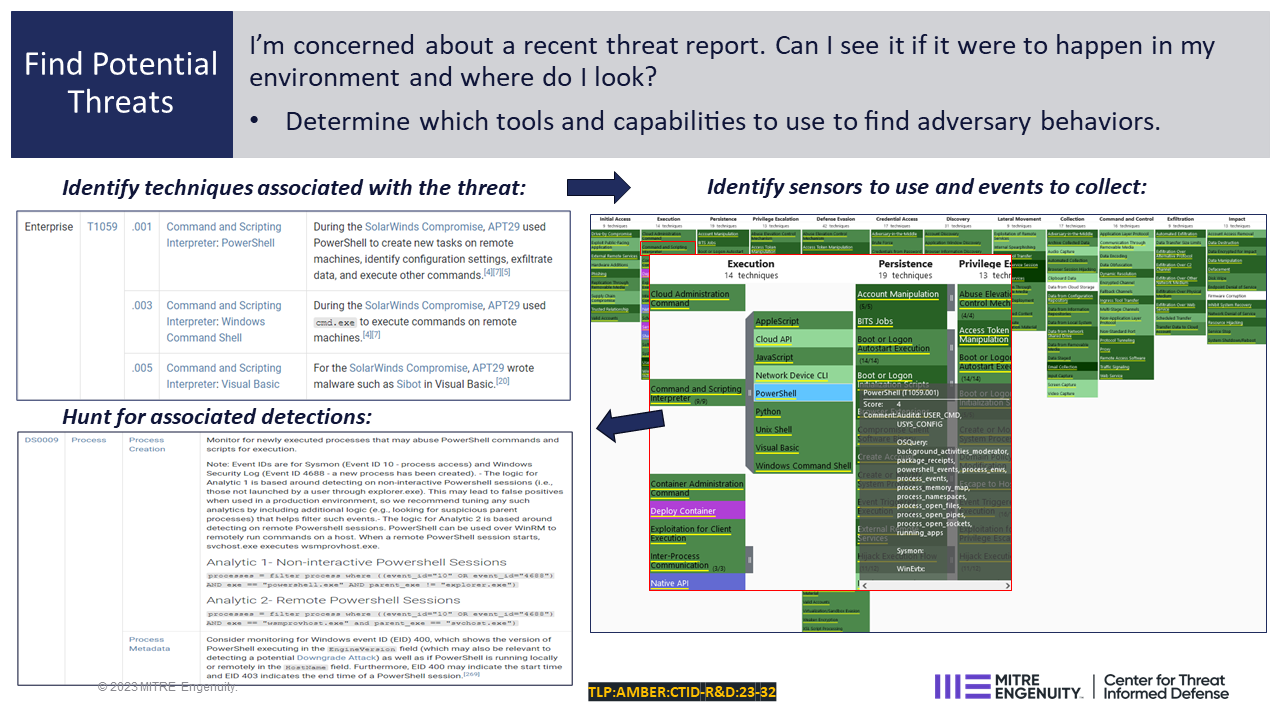Use Cases
Target Audience
The existing communities of Sensors and ATT&CK users include many roles and responsibilities associated with organizational detection processes and procedures. These roles and responsibilities include:
- Incident Response (IR) Professional
Responsibilities include response, management, coordination, and remediation activities for cyber incidents such as malware infections, data theft, ransomware encryption, denial of service, and control systems intrusions.
- Chief Information Security Officer (CISO)
Responsibilities include carrying out information security policies, procedures, and controls, and providing the primary interface between senior managers and information system owners.
- Information System Security Officer (ISSO)
Responsibilities include ensuring the appropriate operational security posture is maintained for information systems or programs.
- Security Operations Center (SOC) Analyst
Responsibilities include monitoring an organization’s networks and systems to detect threats and investigating potential security incidents.
- Security Engineer (SE)
Responsibilities include developing and implementing security controls and solutions to protect networks and systems from unauthorized access and attacks.
Usage
Understanding Current Visibility
What is my coverage for known adversary TTPs given my current tools?
Understand which techniques you have visibility into given current set of tools and capabilities.

Filling Defensive Gaps
If I were to add Tool X, how does that coverage change?
Identify tools and capabilities to acquire or enable in order to fill gaps.

Find Potential Threats
I’m concerned about a recent threat report. Can I see it if it were to happen in my environment and where do I look?
Determine which tools and capabilities to use to find adversary behaviors.

User Stories
This section describes user stories associated with organizational detection processes and procedures, based on the roles and usage identified above.
As an IR, I want to ensure I have complete visibility of an active security incident.
Use the mappings to take the observed adversary behaviors as described in ATT&CK to understand current visibility of potential suspicious activities and tie in actionable intelligence from CTI reporting.
As a CISO or ISSO, I need to align defensive posture with the real-world threats targeting my industry.
Use the mappings to understand which of tools and capabilities provide visibility into specific real-world adversary techniques and where gaps may lie.
As a SOC Analyst, I need visibility into threats launched against my organization.
Use the mappings for identified Data Sources associated with adversary techniques used to identify areas to look for additional indicators of potential suspicious activities.
As an SE, I want to detect entire classes of adversarial behavior.
Build in defensive countermeasures for specific adversary TTPs, using the mappings to identify areas and fill in defensive coverage gaps by reconfiguring existing or adding additional tools or capabilities.